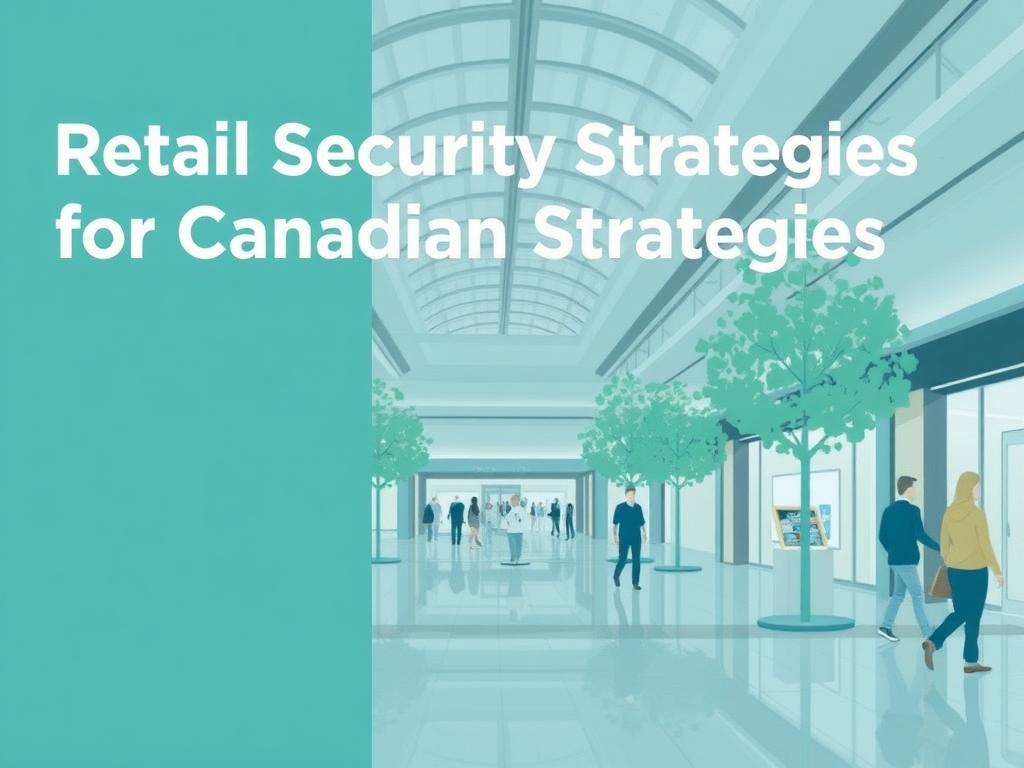Retail security has become an essential aspect of managing shopping centres across Canada. With rising concerns about theft, vandalism, and other criminal activities, shopping centre managers must implement effective security strategies that ensure the safety of both customers and businesses. The unique landscape of Canadian shopping centres, which vary from bustling urban malls to smaller community plazas, demands a comprehensive approach tailored specifically to this environment.
Understanding retail security strategies for Canadian shopping centres means taking into account local laws, cultural nuances, and the diverse needs of tenants and shoppers alike. Unlike other retail environments, shopping centres serve as multi-use spaces that welcome millions of visitors annually, making them prime targets for both petty and organized crime. This article will explore key retail security strategies, practical tools, and emerging trends that Canadian shopping centres can leverage to maintain a secure and welcoming environment.
Why Retail Security Is Critical for Canadian Shopping Centres
Shopping centres are a focal point for community gatherings, commerce, and entertainment. In Canada, where malls often serve as year-round hubs due to harsh winters, maintaining a secure environment can directly affect a centre’s reputation and profitability. Security concerns not only impact shopper confidence but also influence the operational costs for retailers, who must absorb losses from shoplifting, employee theft, and damage.
One of the main challenges lies in balancing a welcoming ambiance with stringent security measures. Overly aggressive security can deter customers, while insufficient protection invites risk. Therefore, retail security strategies for Canadian shopping centres have evolved to emphasize preventive measures, technological innovations, and collaboration between security personnel, law enforcement, and retailers.
Key Retail Security Challenges in Canadian Shopping Centres
Before diving into specific strategies, it’s important to identify the most prevalent security challenges facing Canadian shopping centres:
- Shoplifting and Theft: Both organized retail crime (ORC) groups and opportunistic thefts remain significant threats.
- Vandalism and Property Damage: Acts of vandalism can disrupt operations and deter customers.
- Employee Theft: Internal security breaches continue to cause substantial losses.
- Violent Incidents: Occasionally, disputes escalate to physical violence, requiring rapid response.
- Cybersecurity Threats: With the advent of digital payment systems and online customer interactions, shopping centres face growing cyber risks.
Each of these challenges requires tailored approaches that ensure the protection of assets while maintaining customer satisfaction.
Comprehensive Retail Security Strategies for Canadian Shopping Centres
Retail security strategies for Canadian shopping centres must integrate both traditional security measures and innovative technologies. Below are crucial components to consider:
1. Physical Security and Surveillance
The foundation of retail security is visible physical presence and effective surveillance. Canadian shopping centres often utilize:
- Uniformed Security Guards: These professionals serve as a deterrent and provide immediate response during incidents.
- CCTV Cameras: Strategically placed throughout malls, cameras enable monitoring of high-risk areas such as entrances, parking lots, and retail floors.
- Access Control Systems: Restricting access to certain areas like loading docks and service corridors enhances security for staff and merchandise.
Regular patrols, combined with extensive camera coverage, help create a secure perimeter and decrease chances of theft or vandalism.
2. Advanced Technology Integration
Canadian shopping centres are increasingly adopting technology-driven solutions that supplement traditional methods:
| Technology | Description | Benefits |
|---|---|---|
| AI-Powered Video Analytics | Uses artificial intelligence to detect suspicious behaviors and alert security staff automatically. | Faster response times, reduced false alarms. |
| Electronic Article Surveillance (EAS) | Tagging merchandise with electronic labels that trigger alarms when leaving store premises without deactivation. | Prevents shoplifting, increases deterrence. |
| Mobile Security Apps | Allows guards and staff to communicate in real-time and report incidents promptly via smartphones. | Improves coordination and incident documentation. |
| Facial Recognition Systems | Used to identify known offenders or individuals on watchlists entering the premises. | Enhances threat detection and prevention. |
Adopting these technologies requires training and investment but delivers significant improvements in efficiency and safety.
3. Collaboration with Law Enforcement and Community Programs
Retail security strategies for Canadian shopping centres are strengthened by fostering partnerships with local police and community organizations. Regular communication channels and joint initiatives help to:
- Share intelligence regarding suspicious individuals or crime trends.
- Coordinate rapid responses during emergencies or major incidents.
- Participate in community outreach programs aimed at reducing youth crime and vandalism.
Many Canadian municipalities support programs that engage retailers in crime prevention networks, which prove invaluable for ongoing security efforts.
4. Staff Training and Customer Awareness
The human factor plays a pivotal role in retail security. Training employees to recognize potential threats, handle confrontations, and follow emergency protocols can mitigate risks significantly. Customer awareness campaigns, such as signage reminding shoppers to safeguard valuables, also help reduce theft.
Some key training areas include:
- Recognizing shoplifting techniques and profiles
- De-escalation tactics for confrontational situations
- Emergency evacuation and lockdown procedures
Well-trained staff act as an extension of the security team, offering early intervention opportunities.
5. Environmental Design and Crime Prevention Through Environmental Design (CPTED)
The physical layout of shopping centres influences security outcomes. Crime Prevention Through Environmental Design (CPTED) principles guide the design or modification of spaces to reduce criminal opportunities. Strategies include:
- Natural Surveillance: Using lighting and design to maximize visibility.
- Territorial Reinforcement: Creating clear boundaries between public and private areas.
- Access Control: Limiting entry points and using barriers appropriately.
- Maintenance: Keeping the area well-maintained to discourage vandalism and loitering.
Incorporating these methods can make shopping centres less attractive targets for criminals.
Addressing Cybersecurity in Retail Security Strategies

While physical security remains paramount, retail security strategies for Canadian shopping centres must also address cybersecurity risks. As more shopping centres integrate digital payment systems, Wi-Fi networks, and customer data portals, the potential for cyberattacks grows.
Key cybersecurity measures include:
- Implementing strong encryption and regularly updating software
- Training staff to recognize phishing schemes and other common cyber threats
- Deploying firewalls and intrusion detection systems
- Regularly backing up sensitive information and having incident response plans
Cybersecurity is often overlooked in traditional retail security models but should be an integral component of any comprehensive strategy.
Evaluating the Cost-Benefit of Different Security Strategies

Investing in retail security strategies for Canadian shopping centres involves balancing costs against potential losses from theft and damage. Below is a simplified table outlining common security measures, their average costs, and their benefits:
| Security Measure | Approximate Cost | Primary Benefit |
|---|---|---|
| Uniformed Security Guards | $50,000 — $150,000/year per guard | Visible deterrence and rapid response |
| CCTV Installation and Monitoring | $10,000 — $100,000 depending on scale | Continuous monitoring and incident evidence |
| Electronic Article Surveillance (EAS) | $5,000 — $20,000 per store/centre | Reduce shoplifting incidents |
| Facial Recognition Systems | $50,000+ for full system | Identify repeat offenders and high-risk individuals |
| Cybersecurity Software | $5,000 — $50,000 annually | Protect digital assets and customer data |
Shopping centre management can optimize spending by choosing security measures that align with their specific risks and customer profiles.
Emerging Trends Impacting Retail Security in Canadian Shopping Centres
The retail security landscape continually evolves, influenced by technological advancements and shifting shopper behaviors. Here are some emerging trends:
1. Integration of AI and Machine Learning
Artificial intelligence is being used to not only detect suspicious activities but to predict potential threats by analyzing patterns and behaviors in real-time. This proactive approach is transforming security operations, allowing for quicker and more precise interventions.
2. Increased Use of Drones
While still relatively new, drones are being deployed in larger shopping centres for aerial surveillance, particularly for monitoring parking lots and large events. They provide a dynamic view inaccessible by traditional cameras.
3. Biometric Authentication
Some retailers within shopping centres are experimenting with biometric payment options and entry controls, which not only enhance convenience but add an extra layer of security.
4. Greater Focus on Customer Experience
Security strategies are increasingly designed to be discreet and customer-friendly. For example, subtle cameras and unobtrusive security personnel help maintain a positive shopping environment, balancing safety and comfort.
Practical Tips for Shopping Centre Managers Implementing Retail Security Strategies
For shopping centre managers gearing up to improve their retail security, here are several actionable tips:
- Conduct a Thorough Risk Assessment: Identify the most vulnerable areas and times of day for crime or incidents.
- Engage Stakeholders Early: Involve retailers, security personnel, and local law enforcement to develop a unified approach.
- Invest in Staff Training: Regularly update training programs to keep security staff and retailers informed of the latest threats and response protocols.
- Leverage Technology Wisely: Use a combination of surveillance, access control, and communication tools to enhance situational awareness.
- Maintain Open Communication with Shoppers: Visible security information and awareness campaigns reinforce safety without being intrusive.
- Stay Updated on Regulatory Requirements: Comply with Canadian privacy laws and municipal regulations related to surveillance and security practices.
Implementing these tips can create a solid foundation for effective retail security in any Canadian shopping centre.
Case Study: Retail Security Success Story in a Toronto Shopping Centre

A prominent shopping centre in downtown Toronto faced escalating issues with shoplifting and vandalism. By introducing a multi-layered retail security strategy, including increased uniformed security guards, AI-enhanced video surveillance, and community policing partnerships, they achieved remarkable results.
Within a year, reported theft incidents dropped by 30%, vandalism complaints halved, and shopper satisfaction surveys reflected improved perceptions of safety. This success underscores the importance of combining technology, human resources, and community collaboration.
Summary Table of Security Improvements and Outcomes
| Security Measure Implemented | Outcome |
|---|---|
| Increased Security Guards | Immediate deterrence and quicker incident response |
| AI Surveillance Systems | Enhanced detection and reduced false alarms |
| Community Policing Partnerships | Improved intelligence sharing and prevention programs |
This example serves as a blueprint for other Canadian shopping centres seeking to bolster their retail security strategies.
Conclusion
Retail security strategies for Canadian shopping centres are no longer just about preventing theft—they encompass a holistic approach that integrates technology, skilled personnel, environmental design, and community collaboration. Shopping centres must continuously adapt to evolving threats, balance safety with customer experience, and invest in both physical and cyber protections. By understanding the unique security challenges faced in the Canadian context and deploying a comprehensive mix of proven and innovative strategies, shopping centres can create safe environments that foster trust, encourage commerce, and enhance community wellbeing. As Canadian retail landscapes continue to evolve, so too must their security strategies, making safety a shared responsibility that benefits everyone involved.